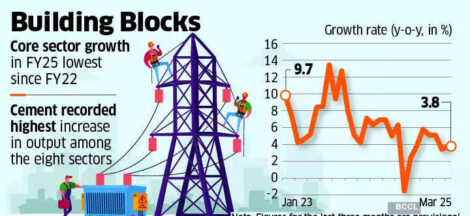NEW DELHI: Growing demand for fuel and other petroleum products amid stagnant domestic crude oil output led India’s reliance on imported crude oil increasing to over 88 per cent in the first 11 months of the current financial year ending March (FY25), indicating that the import dependency for the full financial year could breach the all-time-high level of the last financial year.
Latest data released by the oil ministry’s Petroleum Planning & Analysis Cell (PPAC) shows that India’s oil import dependency was 88.2 per cent in April-February, up from 87.7 per cent in the corresponding period of FY24. For the full FY24, reliance on imported oil was 87.8 per cent. Industry watchers believe that the import dependency level for the entire FY25 could be a tad higher than the April-February level, as was the case in the previous financial year.
India’s energy needs are consistently growing, leading to higher oil imports. This is fuelled by factors such as growing energy-intensive industries, increased vehicle sales, a rapidly expanding aviation sector, growing consumption of petrochemicals, and a rising population. India’s reliance on imported oil has generally increased over the years, with the exception of FY21 when demand was suppressed due to the COVID-19 pandemic. India’s oil import dependency was 87.8 per cent in FY24, 87.4 per cent in FY23, 85.5 per cent in FY22, 84.4 per cent in FY21, 85 per cent in FY20, and 83.8 per cent in FY19.
India’s heavy reliance on imported crude oil makes its economy vulnerable to global oil price fluctuations. This also impacts the country’s trade deficit, foreign exchange reserves, the rupee’s exchange rate, and inflation rate, among others. The Indian government aims to reduce the country’s reliance on imported crude oil but faces challenges due to sluggish domestic oil output amid rising demand. In 2015, the government aimed to reduce reliance on oil imports to 67 per cent by 2022. However, import dependency has only increased.
The government has implemented several policy reforms to encourage investments in India’s oil and gas exploration and production sector, the latest being the Oilfield (Regulatory and Development) Amendment Bill, which was recently passed by the Parliament. The government is also promoting electric mobility, biofuels, and other alternative fuels to reduce oil imports. While there has been an increase in electric mobility adoption and the blending of biofuels with conventional fuels, it is not sufficient to offset petroleum demand growth.
India’s crude oil imports rose to 219.9 million tonnes (mt) in the 11 months to February from 213.4 mt in the year-ago period. Meanwhile, domestic oil production declined slightly to 26.2 million tonnes from 26.9 million tonnes. Total domestic consumption of petroleum products in April-February rose 2.6 per cent year-on-year to 218.3 mt, of which only 25.8 mt of products are estimated to have been produced from domestic crude oil, resulting in a self-sufficiency level of just 11.8 per cent, according to PPAC data. The calculation of the extent of import reliance is based on the domestic consumption of petroleum products and excludes petroleum product exports since those volumes do not represent India’s demand. India—the world’s third-largest consumer of crude oil and also one of its top importers—is a net exporter of petroleum products.
India’s gross oil import bill for April-February was $124.7 billion, an increase of almost 3 per cent year-on-year. Crude oil imports top the list of India’s merchandise imports. India’s crude oil consumption and imports are projected to rise further due to growing domestic demand. Consumption of petroleum products is projected to increase by 4.7 per cent in FY26, reaching 252.93 mt, per PPAC projections. If these projections hold, the country’s petroleum fuel and product consumption in FY26 will hit yet another record.
Unlike many countries, India is seen as a major growth centre for oil demand given the future consumption potential and relatively low per-capita energy demand currently. In fact, India is among the few markets where refinery capacity is expected to expand substantially over the coming years. India currently has a refining capacity of nearly 257 mt per annum.
Source: The Indian Express




 No Tax Demand After Resolution Plan Approval, Says Supreme Court
No Tax Demand After Resolution Plan Approval, Says Supreme Court 